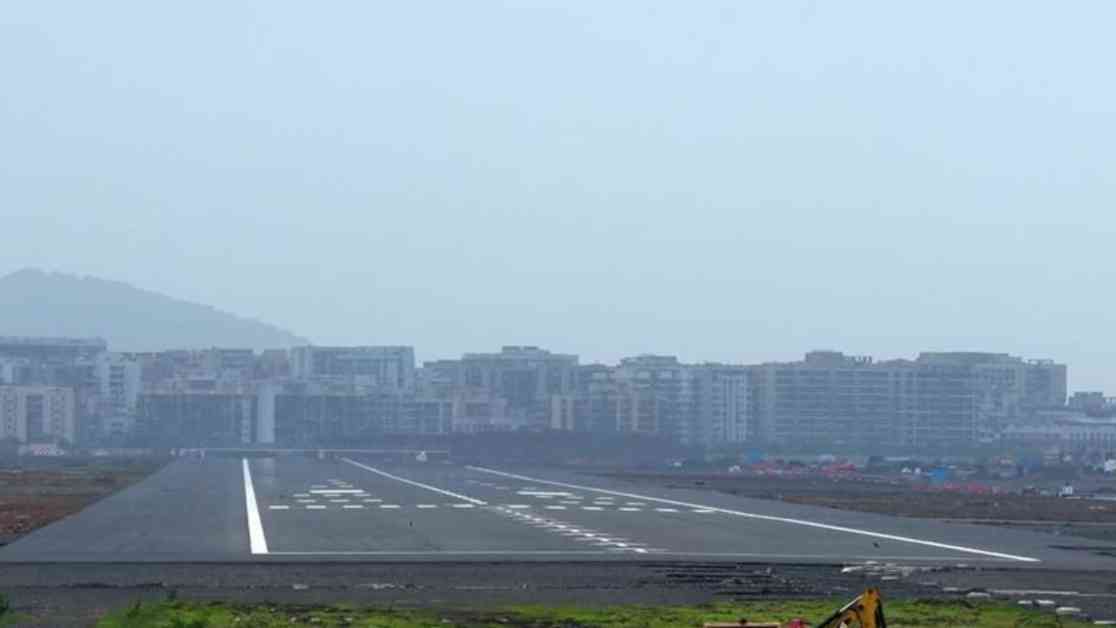Navi Mumbai International Airport Successfully Conducts First Trial Landing
Navi Mumbai International Airport (NMIA) is gearing up for a significant milestone as it prepares to conduct its first trial landing of an aircraft on October 5. This momentous occasion will see Prime Minister Narendra Modi in attendance, marking a moment of pride for the airport’s development.
The airport, which has been in the works for quite some time, is finally making strides towards becoming operational. Domestic operations are slated to kick off in March 2025, followed by international operations in June of the same year. This progression signals a major boost for the aviation sector in the region and is set to transform Navi Mumbai into a key hub for air travel.
Sanjay Shirsat, the newly appointed chairman of City and Industrial Development Corporation (CIDCO), recently visited the airport site to oversee the progress firsthand. Accompanied by CIDCO vice chairman and managing director Vijay Singhal, as well as officials from the Adani group – the construction partners for the airport through Navi Mumbai International Airport Ltd – Shirsat expressed satisfaction with the pace of construction.
During his interaction with the media, Shirsat highlighted the upcoming trial landing, stating, “The airport construction work is progressing satisfactorily to meet our targets. On October 5, an Indian Air Force (IAF) aircraft will land at the airport for a trial run on the runway. We plan to conduct the trial in the presence of the PM. All necessary arrangements are being made with Chief Minister Eknath Shinde overseeing the process.”
He went on to elaborate on the timeline for operations, saying, “Once the test landing is successfully conducted, we aim to commence domestic flights from March 2025. Subsequently, international flights will be introduced from June onwards. This strategic plan will ensure a seamless transition into full-fledged operations at NMIA.”
The NMIA project, with an estimated cost exceeding ₹16,700 crore, holds significant promise for the region’s economic growth and connectivity. With the completion of the Instrument Landing System (ILS) testing by the Airport Authority of India, the airport is now one step closer to obtaining the necessary approvals for licensing and operational readiness.
Shirsat underscored the transformative impact of the project, stating, “This is a game-changer for Navi Mumbai. The airport will feature 4 interconnected terminals with 350 aircraft parking facilities, complemented by metro, rail, and road connectivity from all directions. This comprehensive infrastructure will position NMIA as a key player in the aviation landscape.”
The successful execution of the trial landing on October 5 will mark a significant milestone in the journey towards operationalizing NMIA. The presence of Prime Minister Narendra Modi at this event underscores the government’s commitment to enhancing air connectivity and bolstering infrastructure development in the region.
Significance of the Navi Mumbai International Airport
The Navi Mumbai International Airport holds immense significance for the region and the country at large. As a state-of-the-art aviation hub, it is poised to alleviate the burden on Mumbai’s existing airport and cater to the growing demand for air travel in the region.
The airport’s strategic location in Navi Mumbai, coupled with its modern infrastructure and connectivity, will not only boost economic development but also enhance the overall travel experience for passengers. With the potential to become a key gateway for both domestic and international travelers, NMIA is set to play a pivotal role in shaping the future of air transportation in India.
Impact on Regional Development
The development of Navi Mumbai International Airport is expected to have a transformative impact on the region’s economic landscape. By creating job opportunities, attracting investments, and fostering commercial activities, the airport will serve as a catalyst for growth in Navi Mumbai and its surrounding areas.
Additionally, the enhanced connectivity provided by NMIA will facilitate smoother transportation of goods and services, further bolstering trade and commerce in the region. This, in turn, will stimulate economic growth, drive innovation, and elevate Navi Mumbai as a dynamic business hub.
Future Prospects and Growth Potential
As Navi Mumbai International Airport gears up for its first trial landing on October 5, the future looks promising for the aviation sector in the region. With a robust infrastructure in place, the airport is well-positioned to accommodate the increasing air traffic and meet the evolving needs of passengers and airlines.
Moreover, the seamless integration of air, rail, and road connectivity at NMIA will enhance accessibility and convenience for travelers, positioning the airport as a preferred choice for domestic and international flights. This multi-modal transport network will not only streamline travel but also contribute to the overall efficiency and sustainability of the airport operations.
In conclusion, the forthcoming trial landing at Navi Mumbai International Airport signifies a significant step forward in the airport’s journey towards operationalization. With a strong focus on infrastructure development, connectivity, and operational readiness, NMIA is poised to emerge as a key player in the aviation industry, driving economic growth, enhancing regional development, and elevating the travel experience for passengers.




















